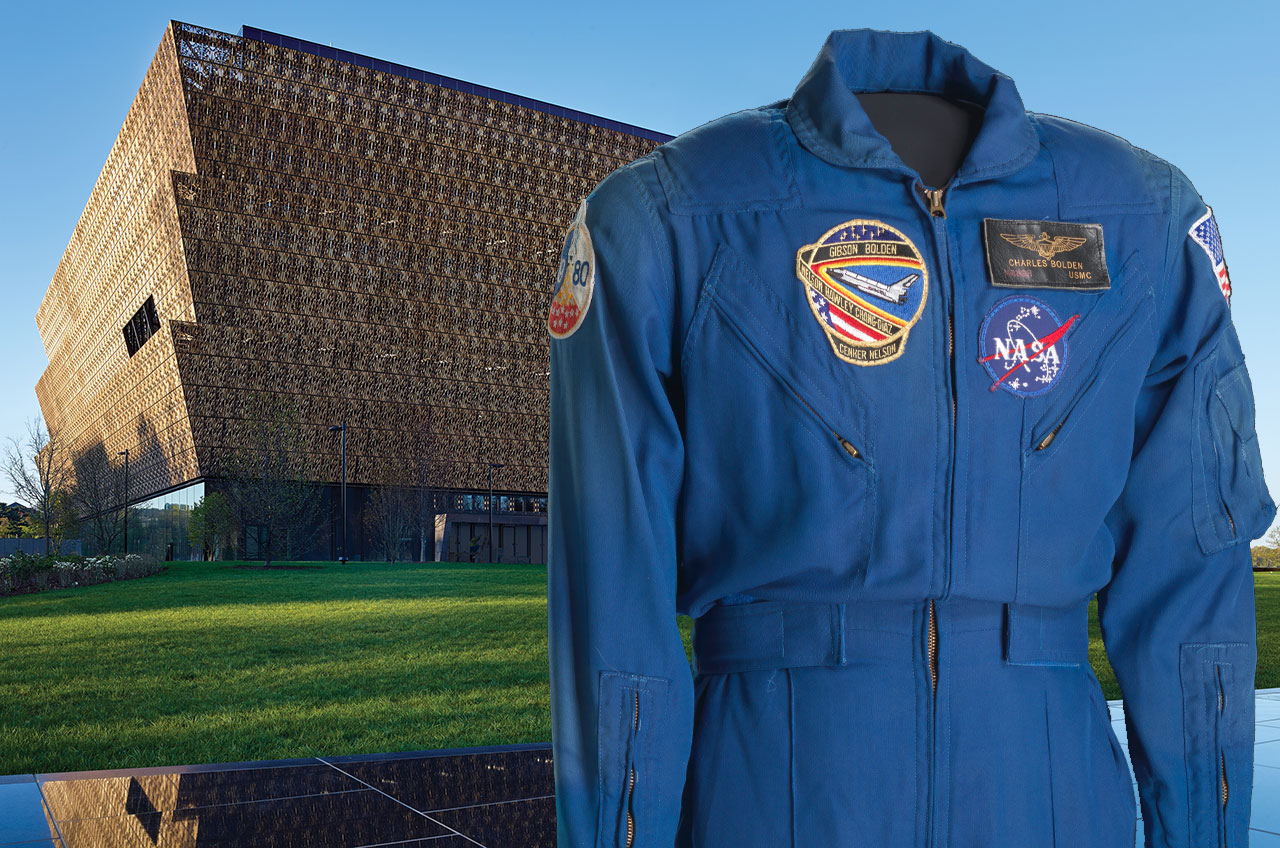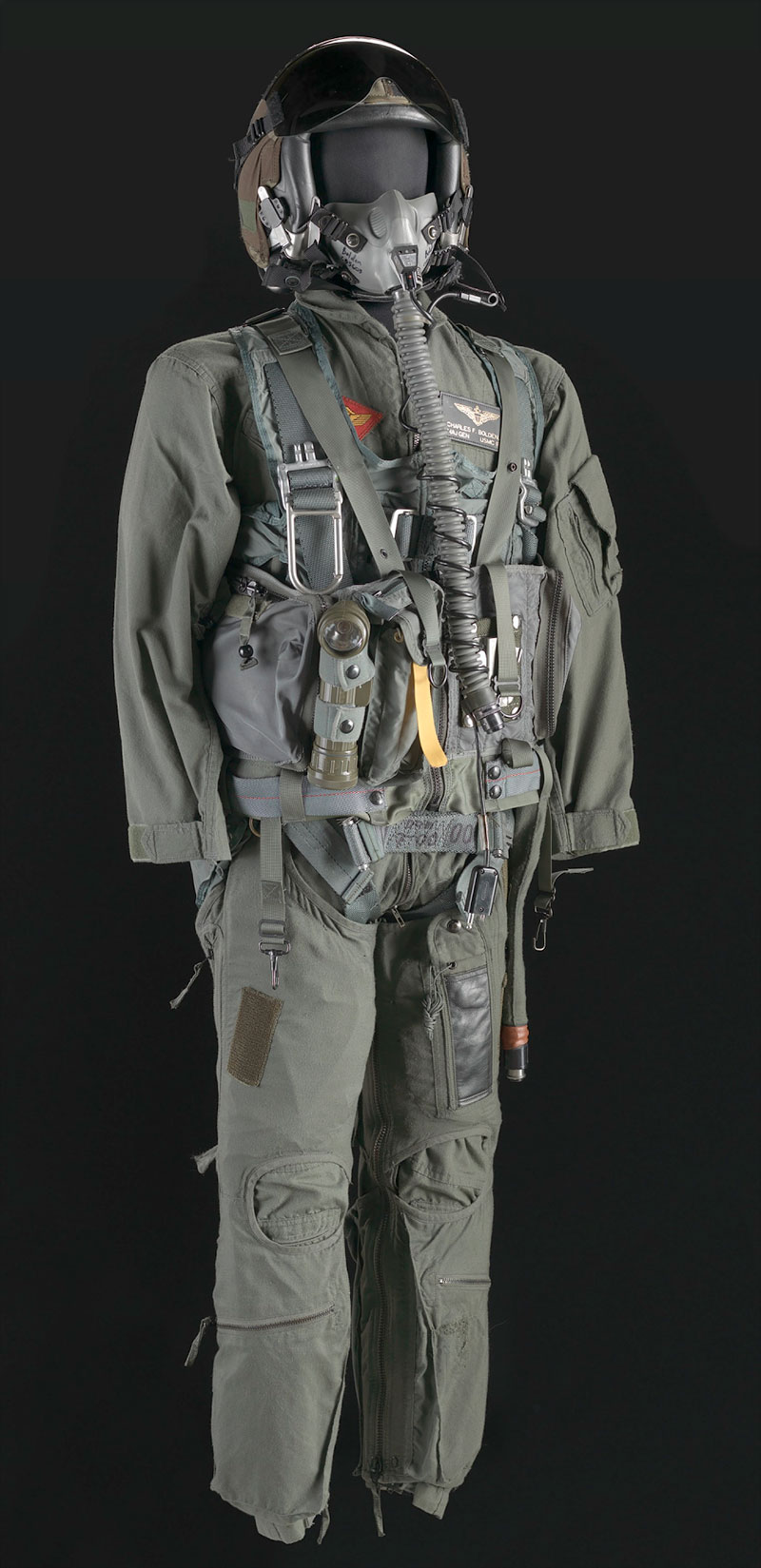Astronaut Artifacts Included in New African American History Museum

Artifacts representing some of the United States' first black astronauts are included within the inaugural collection of the Smithsonian's National Museum of African American History and Culture, which opened its doors to the public on Saturday (Sept. 24).
The new museum, which was erected on the National Mall between the Washington Monument and the Smithsonian's National Museum of American History in Washington, DC, chronicles the major periods of African American history, beginning with origins in Africa and continuing through slavery, reconstruction, the civil rights era and into the 21st century.
"It is a glorious story, the one that is told here," President Barack Obama said at Saturday's opening ceremony. "It is complicated and it is messy and it is full of contradictions, as all great stories are." [NASA Chief Remembers Guy Bluford, First African American in Space (Video)]

The president mentioned the first black female astronaut while describing the African American history represented in the museum.
"Here is the America where the razor-sharp uniform of the chairman of the Joint Chiefs of Staff belongs alongside the cape of the 'Godfather of Soul,'" Obama stated. "We have shown the world we can float like butterflies and sting like bees, that we can rocket to space like Mae Jemison, steal home like Jackie, rock like Jimmie, stir the pot like Richard Pryor and we can be 'sick and tired of being sick and tired' like Fannie Lou Hamer and still be rock steady like Aretha Franklin."
Jemison, who was selected as a NASA astronaut in 1987, joined the president at a reception for the opening of the National Museum of African American History and Culture (NMAAHC) on Friday. Among the museum's 37,000 items, of which 3,000 are on display, is a pin that commemorates Jemison's STS-47 mission on space shuttle Endeavour 24 years ago this month.
Get the Space.com Newsletter
Breaking space news, the latest updates on rocket launches, skywatching events and more!
Former astronaut Charlie Bolden, who in 2009 became the first African American confirmed as the administrator of NASA, donated several items to the museum, including the flight suit he wore on his fourth and final space shuttle mission, STS-60; rugby shirts from his STS-45 and STS-31 missions; and a model of the Hubble Space Telescope, the observatory he helped to deploy into orbit in 1990.
"My flight jacket that I gave them was actually a jacket that flew with me, and more importantly it has each of my four crew patches, so it actually represents my four journeys to space," Bolden said in a video release by NASA on Friday. "It represents my history, or my period of time serving the nation as an astronaut in the space program."
Bolden, who grew up in Columbia, South Carolina during segregation, said he would have never believed he would experience the opening of a museum dedicated to African American history and culture.
"To make it a double 'I would never have believed,' I would never have believed it would be during the administration of a black president — the first black man elected as the President of the United States," Bolden said. "And a third 'I would have never believed,' I really never believed I would become an American astronaut and be sitting here as the NASA Administrator."
Other artifacts on display in the NMAAHC include an open-cockpit PT-13 Stearman airplane that was used to prepare the Tuskegee Airmen for World War II combat duty, Chuck Berry's red Cadillac convertible and items from abolitionist Harriet Tubman's collection, including her hymnal and lace shawl.
"It is my hope that young people who visit the museum will be encouraged to reach for new heights in their own lives," said Bolden.
The Smithsonian's National Air and Space Museum, which marked its 40th anniversary this year, also curates artifacts related to African American contributions to the U.S. space program, including Jemison's flown name tag and the two-piece flight suit worn by Guy Bluford, who in 1983 became the first African American astronaut to fly into space.
Watch NASA Administrator Charles Bolden describe the astronaut flight jacket he donated to the National Museum of African American History and Culture at collectSPACE.
Follow collectSPACE.com on Facebook and on Twitter at @collectSPACE. Copyright 2016 collectSPACE.com. All rights reserved.
Join our Space Forums to keep talking space on the latest missions, night sky and more! And if you have a news tip, correction or comment, let us know at: community@space.com.

Robert Pearlman is a space historian, journalist and the founder and editor of collectSPACE.com, a daily news publication and community devoted to space history with a particular focus on how and where space exploration intersects with pop culture. Pearlman is also a contributing writer for Space.com and co-author of "Space Stations: The Art, Science, and Reality of Working in Space” published by Smithsonian Books in 2018.In 2009, he was inducted into the U.S. Space Camp Hall of Fame in Huntsville, Alabama. In 2021, he was honored by the American Astronautical Society with the Ordway Award for Sustained Excellence in Spaceflight History. In 2023, the National Space Club Florida Committee recognized Pearlman with the Kolcum News and Communications Award for excellence in telling the space story along the Space Coast and throughout the world.










